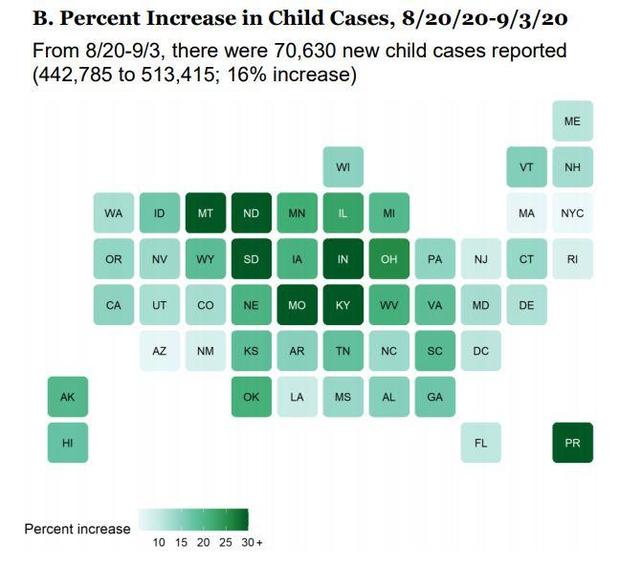Lansing, Mich. (WLNS) — State health officials in Michigan are reporting 783 new cases and 13 additional deaths due to the coronavirus bringing the state total to 108,595 cases and 6,552 deaths.

A total of 3.3 million tests have been conducted to date. That means if each person was tested only once, 33% of the state’s population would have been tested. However, many people are tested more than once for the virus, so there’s not a clear way of knowing how many individual people have been tested for COVID-19 in Michigan.
Breaking down demographics, people ages 80 years and older are still contracting the virus at higher cases per million rates than any other age group.

Additionally females are contracting the virus in Michigan at a higher rate than men, but not by much — for every million people, 11,000 females are infected versus 10,500 men.
Looking at who’s been disproportionately impacted by COVID-19, state data show Black and African Americans are contracting COVID-19 at two to three times the rate of white people.
For every one million people, 16,500 Black Michiganders are contracting the virus compared with 6,300 white Michiganders.

COVID-19 and back-to-school
In Michigan and many other states, it’s back-to-school season, which this year entails a hybrid of online or in-person learning.
For Pewamo-Westphalia Middle and High School, classes will move online immediately. The school plans to resume face-to-face instruction beginning Monday, September 21.
Over in Lansing, parents are experiencing some difficulties with the return to school. Just last week, Lansing School District announced it was holding off classes for one week after one employee tested positive for the coronavirus.
As 6 News’ Araceli Crescencio reported, parents said the most challenging part of the return to school plan is the lack of communication. She spoke with a mother, Tasia Clay, who said,”not being able to get through to people, or even if you are emailing someone the correspondence that you receive just isn’t very effective”
As students are returning to in-person learning, more young people, specifically children are contracting the virus.
Nationwide Schools Update from CBS
New data out Tuesday shows that more than 500,000 children in the U.S. have tested positive for the coronavirus since the pandemic started, according to the American Academy of Pediatrics (AAP). The group said children represented 9.8% of all COVID-19 cases in the U.S., where more than 6.3 million total cases have been reported, per a tally by Johns Hopkins University.
The AAP reported there were 70,630 new child cases, a 16% increase over two weeks, between August 20 and September 3, which brings the national total to 513,415. Puerto Rico was among six states and territories that showed an increase in child cases.
The AAP and the Children’s Hospital Association compiled the data of children of varying ages as reported by 49 state health departments, New York City, Puerto Rico and Guam. Texas was excluded from the analysis, the AAP noted.

Coronavirus deaths among children
The report said the cumulative death toll in the U.S. for children due to the coronavirus is 103. In a subset of data that was analyzed from 42 states and New York City, children were 0-0.3% of all COVID-19 deaths, and 18 states reported zero child deaths.
“At this time, it appears that severe illness due to COVID-19 is rare among children,” the AAP said. But health experts have said that kids can spread COVID-19.
Meanwhile, the Centers for Disease Control has issued new data about a deadly and mysterious pediatric illness with apparent links to the coronavirus. Since mid-May, the CDC has been following an outbreak of Multisystem Inflammatory Illness in Children (MIS-C), which is also or sometimes referred to as PMIS.
The CDC describes it as “a rare but serious condition associated with COVID-19” that sometimes presents after a COVID illness or after contact with someone with COVID-19. Instead of attacking the lungs like the new coronavirus disease does in adults, this syndrome, while seemingly very rare, can trigger serious, even deadly cardiac complications in kids.
As of September 3, the CDC has collected reports of 792 confirmed cases of MIS-C and 16 deaths across 42 states, New York City and Washington, D.C. Other cases are under investigation.
The CDC’s data suggests that “most cases are in children between the ages of 1 and 14 years, with an average age of 8 years.” They also note that “more than 70% of reported cases have occurred in children who are Hispanic/Latino (276 cases) or Non-Hispanic Black (230 cases).”
Some students returning to in-person classes
The AAP report was released as thousands of children returned to school this week for in-person classes. On Long Island, parents seemed nervous and excited as they dropped their children off.
Students lined up in Richardson, Texas, for temperature checks before entering the building. Forrester Elementary in San Antonio is usually packed with 850 kids; but this morning, only 53 opted for in-person classes.
“I feel like they’re just a little off balance, maybe a little bit with the rooms looking different, everybody wearing masks,” principal Kelly Mantle told CBS News. “I think it is going to become a new norm for a little while and children are going to get used to it and we’re getting used to it every day that goes by.”
The new figures from the AAP have some educators worried, like those in suburban Phoenix, where the first day of in-person classes was canceled after teachers called in sick.
In New York, new cases are up more than 25% compared to two weeks ago. And with New York City schools preparing for in-person classes in the coming weeks, Governor Andrew Cuomo is trying to quell parents’ fears.
“We’re going to have a COVID report card for every school in the state,” he said.









































